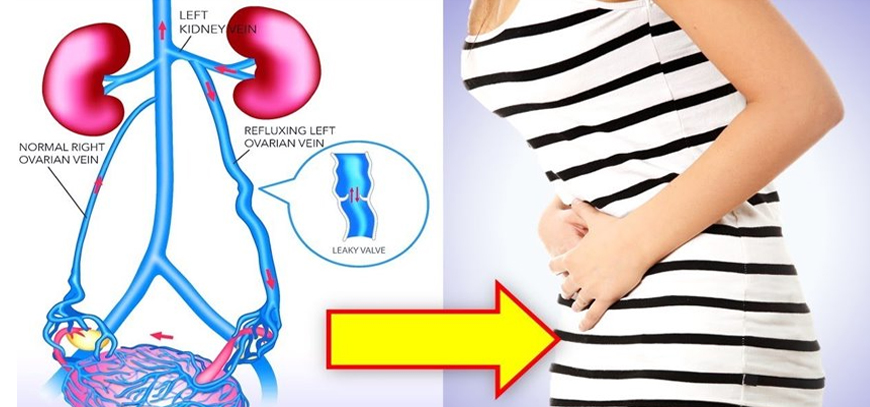Working Time
- Mon-Thu 08:00 – 20:00
Friday 07:00 – 22:00
Saturday 08:00 – 18:00
Contact Info
-
Phone: 92-3324520052
92-3310232883
Ask the Experts
Pelvic Congestion Syndrome Treatment

What is pelvic congestion syndrome?
Pelvic congestion syndrome is a condition that causes chronic pelvic pain. It is thought to be caused by problems with the veins in the pelvic area. This is the lower part of your belly (abdomen).
Veins are the blood vessels that carry blood back to the heart. In some women, veins in the lower abdomen may stop working well. Blood may start to build up inside the veins. When this happens, the veins in your pelvis can enlarge and change shape, like varicose veins. This may lead to the pain and other symptoms of pelvic congestion syndrome.
It happens mostly in women of childbearing age. It may be more common in women who have given birth to more than one child.
What causes pelvic congestion syndrome?
Healthcare providers are trying to understand the possible causes of pelvic congestion syndrome. Enlarged veins in the pelvis seem to play a major role. But many women have enlarged veins and no symptoms. Pregnancy may increase the risk for pelvic congestion syndrome. This is because veins enlarge during pregnancy to support the increased blood flow. This can permanently enlarge the veins and lead to symptoms.
Hormones may also play a role in pelvic congestion syndrome. Estrogen makes veins wider (dilates). This may be why the condition is not common after menopause. Estrogen levels are lower after menopause. Other hormones may also cause veins to grow wider and cause symptoms.
Who is at risk for pelvic congestion syndrome?
You may have a higher risk for pelvic congestion syndrome if you have given birth to more than one child. You may also have a higher risk if other members of your family have it.
What are the symptoms of pelvic congestion syndrome?
The main symptom of pelvic congestion syndrome is pelvic pain that lasts at least 6 months. This pain often first starts during or after a pregnancy. It may worsen after a later pregnancy. The pain may be a heavy or aching feeling. Or the pain may be sharp. Usually the pain is only on one side, usually the left side. At times you may feel it on both sides. The pain is often worse at the end of the day.
Certain factors may make the pain worse, such as:
-
Changing your posture
-
Having sex (both during and after)
-
Standing for a long time
-
Walking
Some women also have symptoms such as:
-
Pain before or during their periods
-
Feeling a sudden need to urinate
-
Enlarged and distorted veins on the buttocks, external genitals (vulva), or thighs
How is pelvic congestion syndrome diagnosed?
-
Urine tests to check for problems with your urinary system
-
Blood tests to check for pregnancy, sexually transmitted infections (STIs), anemia, and other conditions
-
Pelvic ultrasound to look for growths in the pelvis
-
Doppler ultrasound to check the blood flow in the pelvic blood vessels
-
CT scan or MRI for more detailed pictures
-
Diagnostic laparoscopy to rule out other causes of pelvic pain
-
A procedure to take fluoroscopy of the pelvic veins (venography)
How is pelvic congestion syndrome treated?
Ovarian vein embolization is a minimally invasive treatment for pelvic congestion syndrome that is used to close off faulty veins so they can no longer enlarge with blood, thus relieving the pain.
Pelvic congestion syndrome, also known as ovarian vein reflux, is a painful condition resulting from the presence of varicose veins in the pelvis. The condition is caused by valves in the veins that help return blood to the heart against gravity becoming weakened and not closing properly, allowing blood to flow backwards and pool in the vein causing pressure and bulging veins.
During this procedure, an interventional radiologist inserts a catheter through the brachial vein into the faulty veins. Catheterization requires only a small nick in the skin for insertion and under image guidance of the catheter to its target area. The catheter delivers embolization coils that clot the blood and seal the faulty vein. The use of the recently developed Sotradecol foam agent allows the interventional radiologist to block even the smallest veins not previously accessible
What are the benefits of ovarian vein embolization?
Ovarian vein embolization is a minimally invasive outpatient procedure that:
-
Requires NO general anesthesia (only local anesthesia)
-
Results in NO scarring
-
Requires NO overnight stay (same day procedure)
With ovarian vein embolization, you can expect:
-
Success rates of 90%.
-
Quicker recovery time
If you have been diagnosed with pelvic congestion syndrome, know that a surgery is not your option. Our IR physicians at IRCC Pakistan are specialists in treating women with ovarian vein embolization, a minimally invasive procedure performed at many of our locations. The interventional radiologists and clinical staff at our center combine medical expertise and compassion to guide you through your ovarian vein embolization journey every step of the way, providing symptomatic relief and getting you back by improving your quality of life.

